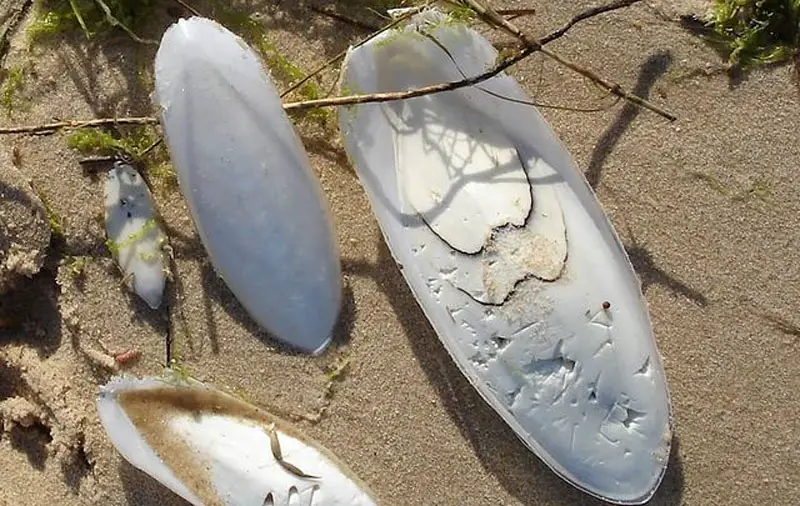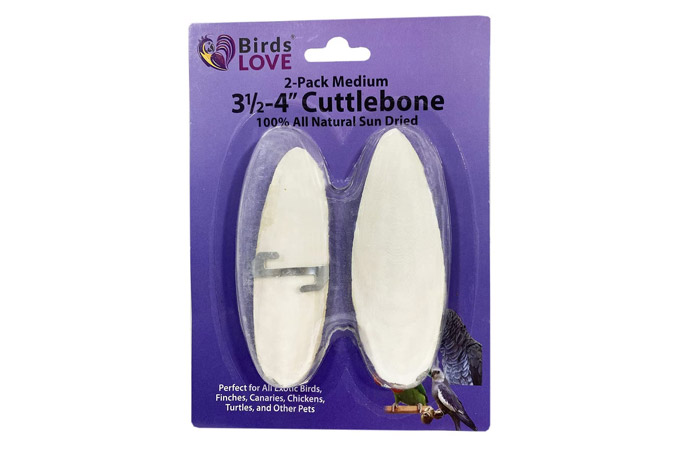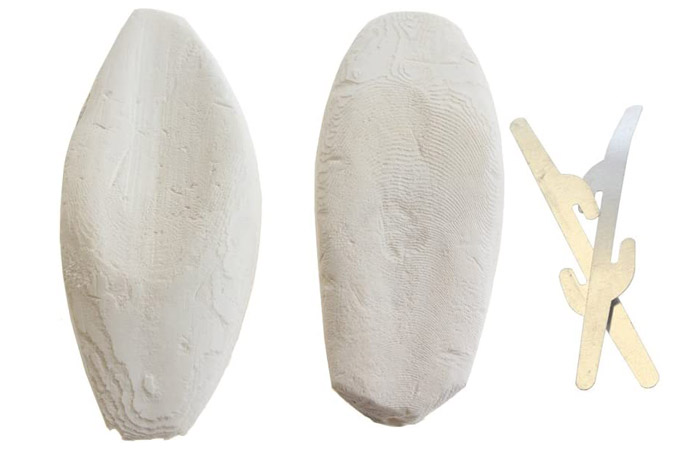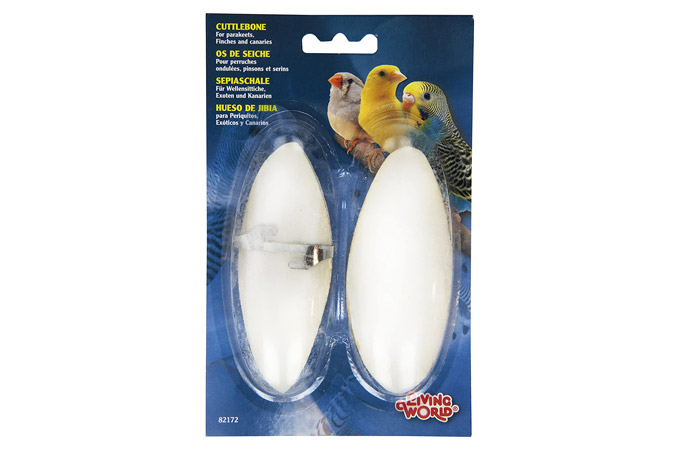Snails can make weird, intriguing, and lovely pets for aquarium owners. But are you wondering if you can introduce cuttlebone to their diet?
Not many snail owners are aware that cuttlebone can be quite healthy and tasty for their snails. However, you should know a couple of essential things about cuttlebone for snails before introducing it to the tank.
Let’s dive right in and find out what they are!
Importance of Calcium for Snails
Freshwater snails, like mystery snails and nerite snails (one of the best clean-Up crews), can be susceptible to environmental changes, especially during molting.
One key water quality parameter that plays a crucial role in their development is calcium. As you might know, snail shells are comprised of 95–99.9% calcium carbonate [1]. A lack of calcium can result in softening of the shell, deformed shells, and reduced growth rate [2].
Because of the composition of the freshwater, it’s more difficult to maintain sufficient calcium hardness (70-90 mg/L calcium) for snails. If your aquarium water has low calcium hardness, this is where calcium additives come into play.
The most commonly used methods of calcium additives are crushed coral, cuttlebones, eggshells, wonder shells, and liquid additives. However, you must be thoughtful with these calcium additions as high uptake of calcium can inhibit their soft-tissue growth [3] and increase the frequency of cleaning filters.
What Is Cuttlebone?

As the name suggests, the cuttlebone is the calcareous internal shell taken from a cuttlefish, a small cephalopod, as we all know. In the cuttlefish, the cuttlebone is filled with air that helps with buoyancy.
Are Cuttlebones Good For Snails? The Benefits
Cuttlebones are seen in pet stores everywhere. And it seems that every birdcage requires one or two for its resident to be happy and healthy! But what purpose do they serve, and why are they so popular in the fish-keeping community?
Best Source of Calcium
Cuttlebone consists of two main components, 85% calcium carbonate (CaCO3) and 8.9 % organic material- mainly carbohydrates.
Humans have used cuttlebones for many purposes over the years. Today, the cuttlebone is a must-have for any bird enthusiast.
Likewise, cuttlebone can also be an excellent calcium source for our snail friends!
Provide Continuous Mineral Cations
In addition to calcium, it contains amounts of magnesium, sodium, and other necessary minerals that are meant to provide cations and electrolytes to the aquarium. When you put it in an aquarium, it slowly dissolves and releases these minerals into the water to battle oxidative stress in fish and snails.
Keeps them Busy
Besides being a calcium-rich dietary supplement, its rough texture is perfect for helping alleviate boredom in your snail tank. Cuttlebone is much larger than other calcium sources and will last your snails forever in large fish tanks.
Save Time and Money
You can find cuttlebone pretty cheap at your local pet store. A single cuttlebone can provide calcium to your snail tank for a long time. You don’t have to worry about changing it out too often like you would with other supplements.
Eggshell vs. Cuttlefish Bone for Snails
Since we already know that eggshells contain just as much calcium as cuttlefish bone. In fact, both the items are made of Calcium Carbonate (CaCO3) and are incredibly healthy for snails.
You may be wondering, what’s the difference between the two?
The main difference is linked to their structural architectures. Cuttlebone is composed of CaCo3 in its form of Aragonite polymorph [4], while eggshells are made of the Calcite polymorph [5].
| Parameters | Cuttlefish Bone | Eggshell |
| CaCO3 | 40% | 40% |
| Polymorph | Aragonite | Calcite |
| Stability | Metastable | Very Stable |
The different polymorphs of CaCo3 offer distinct advantages. Calcite is the stable form, whereas aragonite is metastable. That’s the reason why cuttlebone is preferred over eggshells – Aragonite is more soluble than Calcite in water.
Author note: For the same reason, it is best to give eggshells to snails in a powdered form.
Wonder Shell vs. Cuttlebone
Like cuttlebone, the wonder shell primarily comprises calcium carbonate (CaCO3) in its aragonite polymorph.
The difference is due to the size. The smaller size of the wonder shell means that it should not be placed in an area of high water flow in your aquarium, like in filters.
Will Cuttlebone Raise pH?
Yes, the cuttlebone contains calcium carbonate and therefore raises the KH level. While the KH prevents the pH from changing as quickly [6] in the aquarium.
When KH is raised, more acid can be neutralized, and that’s why you see a higher pH.
Will Cuttlebone Raise GH?
Yes, adding cuttlebone to the aquarium will increase its GH by at least a 10% bump after a few days. It is essential to keep an eye on these levels, as increasing them by too much will cause issues with your pets in the tank.
How Much to Give Cuttlebone to Snails?
The question typically goes something like this: “how long does a cuttlebone last in a fish tank?” or “when to replace cuttlebone?” The answer to these questions is that it varies from a tan.
It really depends on how many snails you have, the size of your tank, where you place the cuttlebone, the water flow in your tank, and how soft the water is to start with.
As a general rule of thumb, we recommend replacing the cuttlebone every 3-4 weeks for a 10-gallon tank. To prevent the GH goes up considerably, try to break up the cuttlebone into pieces the size of a dime or smaller and place it in a low-flow area. When that piece is gone, you can always add another one.
Best Cuttlebone for Snails
Now that you know about the advantages of adding cuttlebone to your snail’s diet, here are a few of the best products to consider.
Birds LOVE Cuttlebone

Although the name suggests that this product is for birds, it is entirely safe and healthy for your snails and shrimp as well. This product contains a natural source of calcium and minerals that help your snails grow healthy and have a strong shell. Not just that, the ingredients help in blood clotting, which is essential for your pet.
It also contains a host of other ingredients like zinc, copper, and potassium, all of which are excellent sources of nutrition for snails. All you need to do is scrape the cuttlebone into a powdered form and add it to your tank!
What we like:
- 100% real sun-dried cuttlebone
- No additives, natural and fresh
- 3 different packs
What we don’t like:
- Clips do not hold well
Emours Natural Cuttlefish Bone

The Emours Natural Cuttlefish Bone features a handy knife scraper that allows you to scrape the bone to make it powdery and easy to add to the tank. Your snails will thrive on the calcium and minerals in this product, helping them grow a hard, healthy outer shell.
Furthermore, it comes in an assortment of sizes, enabling you to pick the most suitable one for your requirements.
What we like:
- Assorted sizes (4-6 inches in length)
- Clean, thick enough (sharp edges could be deadly for a snail)
What we don’t like:
- A little more expensive
Living World Cuttlebone

The Living World Cuttlebone is derived from natural cuttlefis, a natural product that doesn’t contain toxins and contaminants. Especially good for the aquarium baby snails as they really need that calcium, including mystery snails, nerite snails, and other types.
You can break the bones into any size you want for smaller tanks or even powder and sprinkle them on their food to provide extra calcium.
What we like:
- 100% from cuttlefish, no additives
- Clean surface
- Great value
FAQs:
How to Sink Cuttlebone in the Aquariums?
There are many ways to sink the cuttlebone in the tank, you can try clipping it on to a veggie clip or just leave it, it’s porous and will slowly dissolve in the water. While the fast way is boiling the cuttlebones for 1-3 minutes, then cool them down, they will sink like a rock.
Can I Power the cuttlebone?
Yes, you can powder and sprinkle cuttlebones on their homemade food to provide extra calcium.
Final Thoughts
So, now that you know everything you need to know about cuttlebone for snails, we can end our guide here.
Before signing off, we want to mention that while cuttlebone is excellent for your snails’ health, ensure that you check the pH level of your tank consistently. Also, be sure to add other tasty treats to your snails’ diet, so they don’t get tired of eating the same thing.
Well, that’s all we have for you today. If you have any questions or feedback, please feel free to reach out to us in the comments section below. We would be happy to help you out!
Article Sources:
- The concentration of calcium carbonate in shells of freshwater snails [BioOne]
- Effects of dietary calcium on growth and oviposition of the African land snail Limicolaria flammea (Pulmonata: Achatinidae) [SciELO]
- Differential growth rates and calcium-allocation strategies in the garden snail Cantareus aspersus [Oxford Academic]
- Interrelated chemical-microstructural-nanomechanical variations in the structural units of the cuttlebone of Sepia officinalis [Scitation]
- Avian eggshell biomineralization: an update on its structure, mineralogy and protein tool kit [BMC]
- What do you need to know about water chemistry and why? [Duke.edu]
- Genuine Aquarium Wonder Shell Aquarium Mineral Blocks [AAP]

Thank you for sharing your knowledge. I haven’t done aquariums for 10 years. Moving from NC to Indiana then Chicago I didn’t have the time to put into them . I’m starting back up and things have changed a bit. So I’m learning new stuff , which I’ve always enjoyed. Before I never dealt with snails , but ended up with a few I’m guessing from a plant. I enjoy their Shenanigans. So I am learning how make my party crashers happy and healthy.
Hi Dottie, that sounds like a good plan. Best of luck.